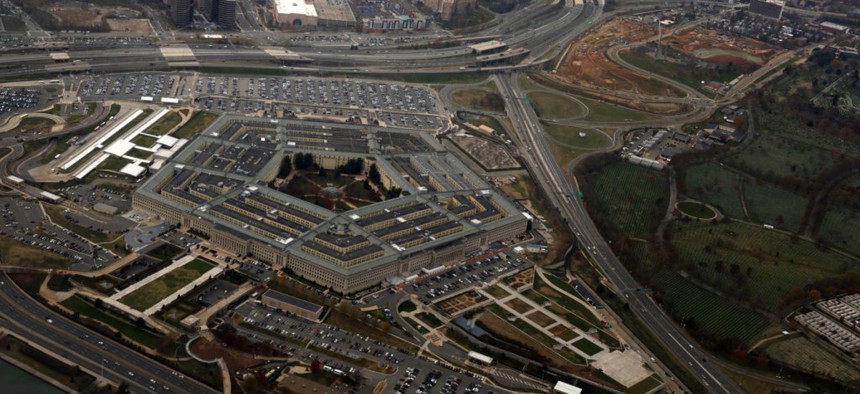DOD launches investment arm to fuel innovation

Gettyimages.com / Alex Wong
The Defense Department is standing up an organization to route more private sector money towards key technology areas such as quantum computing and advanced materials.
All everyone across the public sector ecosystem wants to achieve is successful technology developments and deployment at the scale.
But money problems of all types get in the way: sometimes not having enough of it, other times not being categorized right, and just not moving it fast enough.
Private sector organizations, and particularly those involving venture capital, work very differently of course with more flexibility and agility in how they manage and move money.
The Defense Department is looking to copy their pace and cadence with a new organization unveiled Thursday that will focus on steering capital in more commercial-like manner.
Within the next 90 days, DOD will push to staff and stand up its new Office of Strategic Capital under the leadership of Pentagon Chief Technology Officer Heidi Shyu.
This sentence from Defense Secretary Lloyd Austin's memo directing that office's establishment puts the spotlight on where the money is these days for capability ideation and innovation:
"As today private sector capital is the dominant funding resource for technology development, we can build enduring advantages though engagement with trusted private capital that is focused on critical technology areas for the Department of Defense."
OSC will have a director that Austin's memo does not name, but the Wall Street Journal reported Thursday that Jason Rathje will lead the office. He is a co-founder of the Air Force's AFWERX venture funding and technology acceleration organization.
Austin's memo and this DOD public statement on the office have all the details of its structure and how it will work. Some of the investment areas include advanced materials, next-generation biotechnology and quantum computing.
One main responsibility for OSC worth paying attention to is the funding of investments in critical technology areas for DOD "that the private sector has not sufficiently supported." Meaning the department will take the lead on steering money toward those areas.
While this angle has not been formalized yet, the Office of Strategic Capital will explore the use of loans and loan guarantees as other means to unlock more financial resources for tech development. Other federal agencies use those and other types of credit programs to tap into the capital markets.
Neither Austin's internal memo nor DOD's statement announcing the office call out China by name as top of mind for the department. But we can venture fairly educated guesses from these statement that the so-called "near-peer" competition with China is in their thinking.
"We are in a global competition for leadership in critical technologies, and the Office of Strategic Capital will help us win that competition and build enduring national security advantages," Austin said.
"America's strategic competitors are working to influence U.S. technological innovation to their advantage. OSC is part of a broader administration-wide effort to ‘crowd-in' private capital in areas where our efforts can boost our future security and prosperity," said Shyu, undersecretary for research and engineering.
How is China catching up or has caught up to the U.S.? Subsidies, policies and other pressure points to direct their industrial base to what the government wants to do. China is a communist country after all.
The U.S. government may be "Fortune One" with tremendous buying leverage, but for the most part has not had the kind of industrial policy China has.
But competition and fear of losing has sparked change: see the $52 billion chip production funding package that became law in August as an example of how the U.S. is looking to up its game.
DOD's industrial base is replete with large contractors having their own venture capital funds that look for promising startups to back and help scale their technologies, investment firms looking to do the same at the intersection of defense and commercial.
The Pentagon of course has its Defense Innovation Unit as connective tissue between commercially oriented tech firms and the military. In-Q-Tel has been the intelligence community's way of injecting funds into startups whose creations have potential.
Intel, Apple, Cray and the former Sun Microsystems all tapped into some form of government-backed or promoted investment funds to help their growth.
All of that tells us there are a myriad of approaches everyone in the national security technology ecosystem is running toward as fast as they can to develop the technologies as such, thus crossing both the technology and business Valleys of Death.
OSC's big-picture mandate on those treacherous valleys is to ensure the long-term financing is there so it can be crossed by the tech itself and those that make it from the laboratory to full-scale production and fielding.
You tell us what the best approach is best to achieve all of the above. Even what the best ratio of each approach is will do.


